Pathologic 2 Review
Pathologic 2 is an intense experience, one that weaves your suffering into its own narrative
Category: Reviews
Written by: Graham Thomas on June 12, 2019
Developed by: Ice-Pick Lodge
Published by: tinyBuild
Release Date: May 23, 2019
Genre: First-Person Survival/Psychological Horror
Platform: Windows
Pathologic 2, nomenclature aside, is a remake of Pathologic, released in 2004 by developer Ice-Pick Lodge. It was Kickstarted after the original gained a kind of cult status among fans. I should disclose that I’ve only briefly played the original, so I can’t speak to whether number 2 is faithful to it. But I’m told that, being a remake and not so much a sequel, it’s fine to jump in here without experiencing the first.
The game takes place sometime in the early 20th century, in a small town on the Russian steppe, but in an alternate world populated by superstitions, strange rituals, and mythical creatures. Think something like a heady mix of Andre Tarkovsky, Franz Kafka, and Jim Henson. You play Artemy Burakh, a young surgeon called back to his hometown after receiving a mysterious letter from his father, the town’s doctor. Upon arriving, you discover that your father has been murdered and that the townspeople suspect you of being responsible. This kicks off what at first appears to be a classic whodunit narrative, but quickly develops into something much more unique. As you’re investigating the death of your father and attempting to clear your name, a plague hits the town. You and its inhabitants are suddenly faced with a nameless looming existential dread, and one that you are charged with helping the town to avoid.
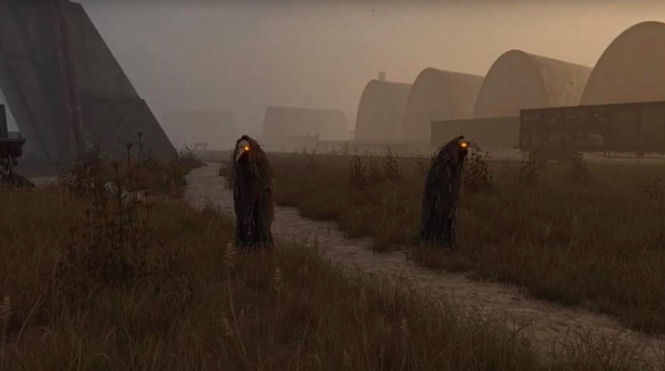
Pathalogic 2 is essentially a first-person narrative survival game. It takes place entirely within the confines and the outskirts of a single town, which you can walk about freely. In addition to chasing leads to help you find a cure for the plague and to identify your father’s murderer, you’ll need to manage the usual raft of survival mechanics. Thirst, hunger, health, exhaustion, and immunity to the plague are all indicated using metre bars in your inventory. These will intermittently diminish over time and you’ll have to replenish them by eating, sleeping, drinking, or healing. You do this by acquiring items scavenged from the rubbish bins and abandoned houses about town, bought at shops, or bartered with the locals. You can also acquire resources through somewhat more nefarious means, robbing or murdering the locals, or selling organs on the black market. But these actions, while lucrative, will come at a cost. Your reputation with the people in the region will fall. They may even eventually refuse to trade with you, or, if it falls far enough, some of them will actively hunt you and kill you, making travel through certain regions much more difficult.
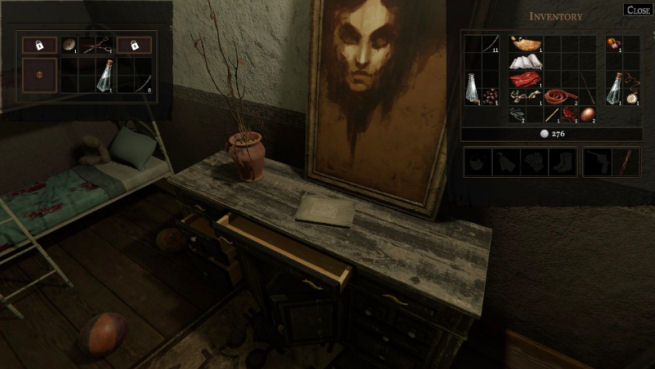
Behind all of this is a looming time limit on your success. You have 12 days to find a cure for the plague, or a terrible fate will befall the town. Time ticks by persistently, every hour marked by the ringing of the town’s bell. As one character reminds you early on, the town will not wait for you. It will change without you, or it will change with you. But it will always change. Events and characters will show up as markers on your map during the day and night, but there’s no way of knowing how long they’ll stay available. Take too long to attend to a marker and you may find the opportunity disappearing entirely, potentially closing off an important plot thread and requiring you to find another way to achieve your ends. This means you need to prioritise markers, plotting your journey through the city to most efficiently use your time and further your goal of finding a cure. You won’t always be able to make it everywhere you need to go. Sacrifices will have to be made.
All of these choices are made within the context of ever-pressing survival needs. Those needs will continually get in the way of you achieving your pressing objectives. Not only do you need to ensure your own survival, but also that of the characters you’ll meet. Each day a number of them will face a threat of infection and death from the plague, and you’ll need to decide which of them to help by administering immunity boosters. At the end of the day, characters face a random chance of getting infected or, if already infected, dying from the infection. This chance will be higher or lower depending on their immunity levels. And it matters who dies. Some of the characters may play an important role in helping you find a cure, others less so, but it’s never clear who’s important and who’s not. This uncertainty keeps you forever on edge, unsure of where to expend resources and time. You can’t see or save everyone, but who you choose to see or save will affect how your own story unfolds.
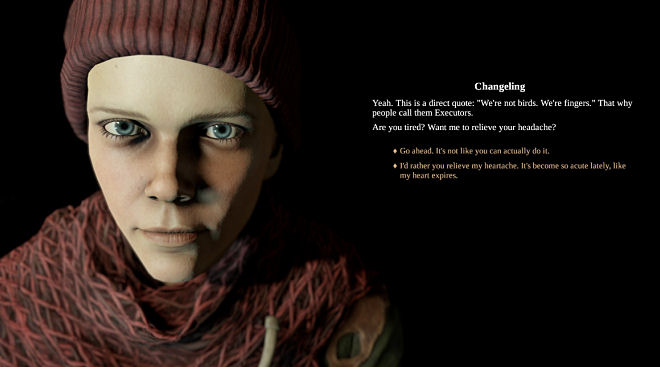
All of this gives weight to every decision in Pathologic 2. Literally everything has a cost. Decide to race to the bottom of the map to attend to the marker that has popped up and you may not have time to administer treatment to a character on the other side of the map, who may end up dying as a result. You’ll need to make a tough decision as to which is more important to your goals, and you’ll probably never know if you were right. Take a few hours to sleep and recover valuable health and you may find other opportunities closing off permanently. Don’t take that time to sleep and you may find yourself dying before you even get to the character. These decisions matter and they will have consequences. Some of them will come back to bite you. Some of them will pay off in unexpected ways. But they matter.
That makes for an incredibly engrossing experience, one where you’re constantly forced to weigh each decision and meticulously plan your actions. The game is never really clear about what you need to do to achieve victory. There isn’t a main quest line and you never really know which of the events you need to be at, or which of the characters is central to your goals. All you can go on is the information you get through conversations with other characters which are often ambiguous and uncertain. The game largely refuses to tell you what matters. You have to decide what matters. And sometimes inaction can change the story as much as action.
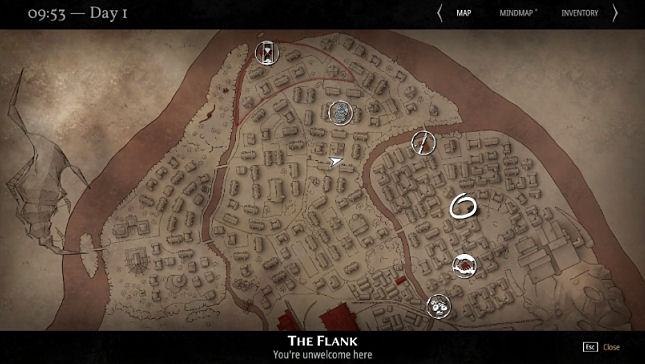
Pathologic 2 is punishing. Surviving is tough and the clock continuously ticking on your actions makes for a pretty manic and stressful gaming experience. If you’re the type who likes to play games to relax, Pathologic 2 is probably not for you. The first few days do a nice job of gradually easing you in, but once things ramp up you’ll find yourself almost constantly in a frenzied race from location to location, desperately fighting against the clock to get to as many map markers as you can, or frantically searching for a bit of toast to offset starvation, or a barrel of water to fill up your vials. And the game doesn’t let up. As the days progress, the town deteriorates more and more. The plague spreads. The streets become less safe, the town’s infrastructure less reliable. The game eases you into the mechanics, but it doesn’t take long for it to start tightening the rack, making your life more and more difficult and putting your goals further and further out of reach.
This difficulty plays an important role in the narrative, though. You populate a brutal world, faced with an impossible enemy, an existential threat that the game wants you to feel the weight of. And you will feel that weight. It employs its mechanics masterfully to force you to feel it. The sense of struggle and hopelessness in the face of impossible odds grows with each passing day, as the world around you succumbs to the plague and your quest takes on greater and greater urgency. That kind of suffering can be an intense experience that some will enjoy, but others won’t. For those players who may find it all a bit much, the developers have recently updated the game to include difficulty sliders, which give you control over just how unforgiving the different mechanics are. If you’re going to use those, I’d recommend going easy on them. It’s the costs that make the choices in this game feel so heavy. Suffering really is a part of the game’s design.
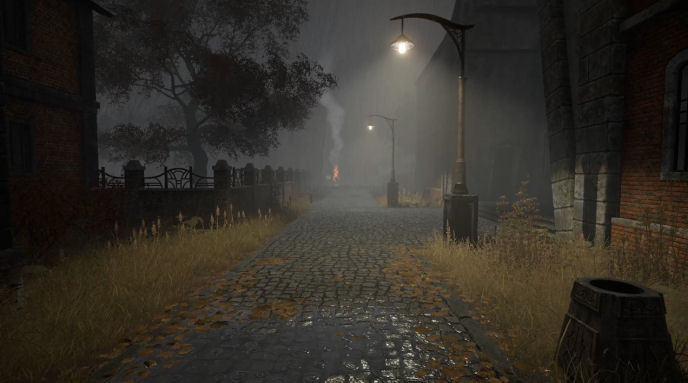
Overall, though, I see this as a good move, because the world of Pathologic 2 is devastatingly beautiful, and the game is worth checking out for that alone, even if you aren’t a fan of hardcore survival games. It’s great to look at, combining a unique aesthetic design with a haunting soundtrack that oozes atmosphere. The characters, the writing, and the world-building is where the game shines loudest. The inhabitants of the Town are all fascinatingly strange individuals, their dialogue beautifully written. The characters of Pathologic 2 speak with a kind of poetic lilt, musing philosophically on the state of their world, constantly referring to mythologies, traditions, and histories that always exist just out-of-frame. This made the world feel large and interesting to me. The game uses surrealism to explore a meta-commentary on gaming itself, staging itself as a kind of Brechtian theatre that justifies its mechanics to you as you play. It all comes together to make for something very special.
While all of this is gushing praise, the game isn’t perfect by any means. There are bugs here and there. I had some keyboard difficulty at times, where diagonal movement dropped in and out, but this might have been unique to me as I couldn’t find any mention of others having the same problem. The combat is undoubtedly its weakest point. It’s janky and imprecise, bugging out at critical times. A rather frustrating affair on the whole. Thankfully, barring one particularly annoying event late in the game, you can mostly avoid it altogether. And most of the time you’re going to want to. Sneaking by or avoiding areas populated by enemies will almost always be a better option than fighting, unless you’re desperate for bodies to loot and sure you can win.
Despite these minor shortcomings, I was blown away by this game. It’s one of the most original and engaging experiences I’ve had in quite awhile. Frustrating at times, but always utterly captivating, Pathologic 2 is risky game-making at its best. It’s a pity that some of the reviews have been so critical of it, because I feel like they’re treating it a tad unfairly. It’s a game that’s going for a particular niche experience, and it succeeds brilliantly at what it sets out to do. That experience might not be for everyone, but in a time when so many games opt to play it safe, it’s refreshing to see developers willing to take risks in order to create something original. And Pathologic 2 succeeds because of those risks, not despite them.
Grade A+
| + Atmospheric and engaging world, wonderful character design, excellent writing + Beautiful soundtrack including songs by neo-folk band Theodor Bastard and music by Mushroomer + Choices really matter – Janky combat |
 |
Trailer:
OS: Windows 7/8/10
Processor: i3 (8/9 Generation) ~3 Ghz / Ryzen 5
Memory: 8 GB RAM
Graphics: NVIDIA GeForce GTX 660
DirectX: Version 11
Storage: 25 GB available space
Sound Card: Integrated

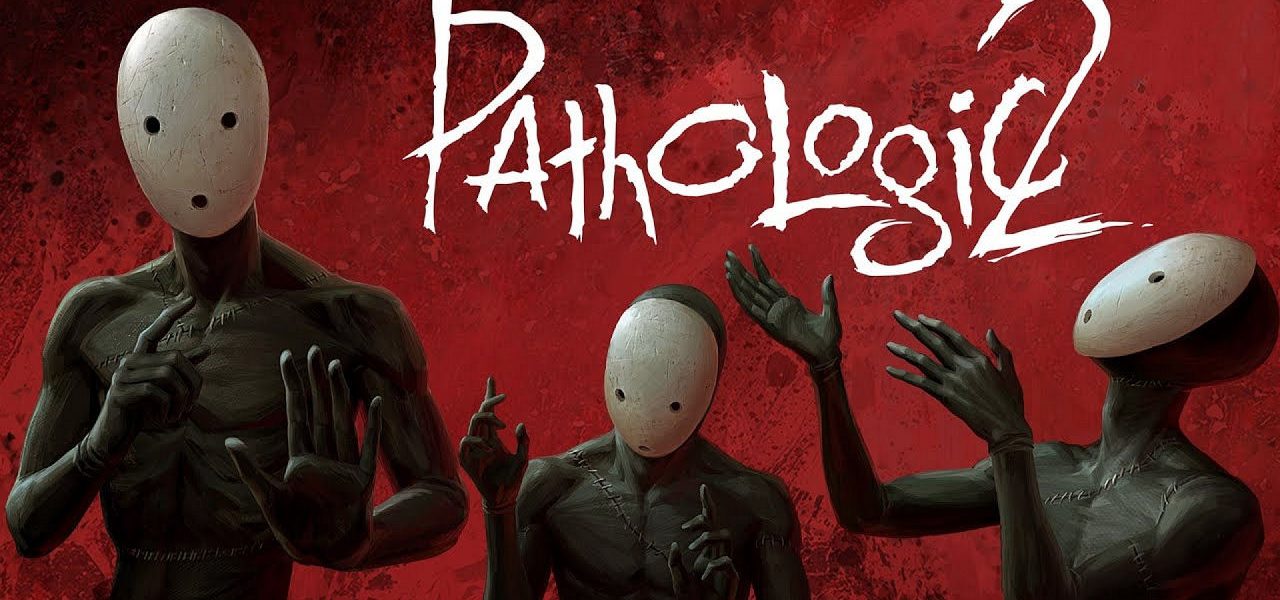
Leave a Reply